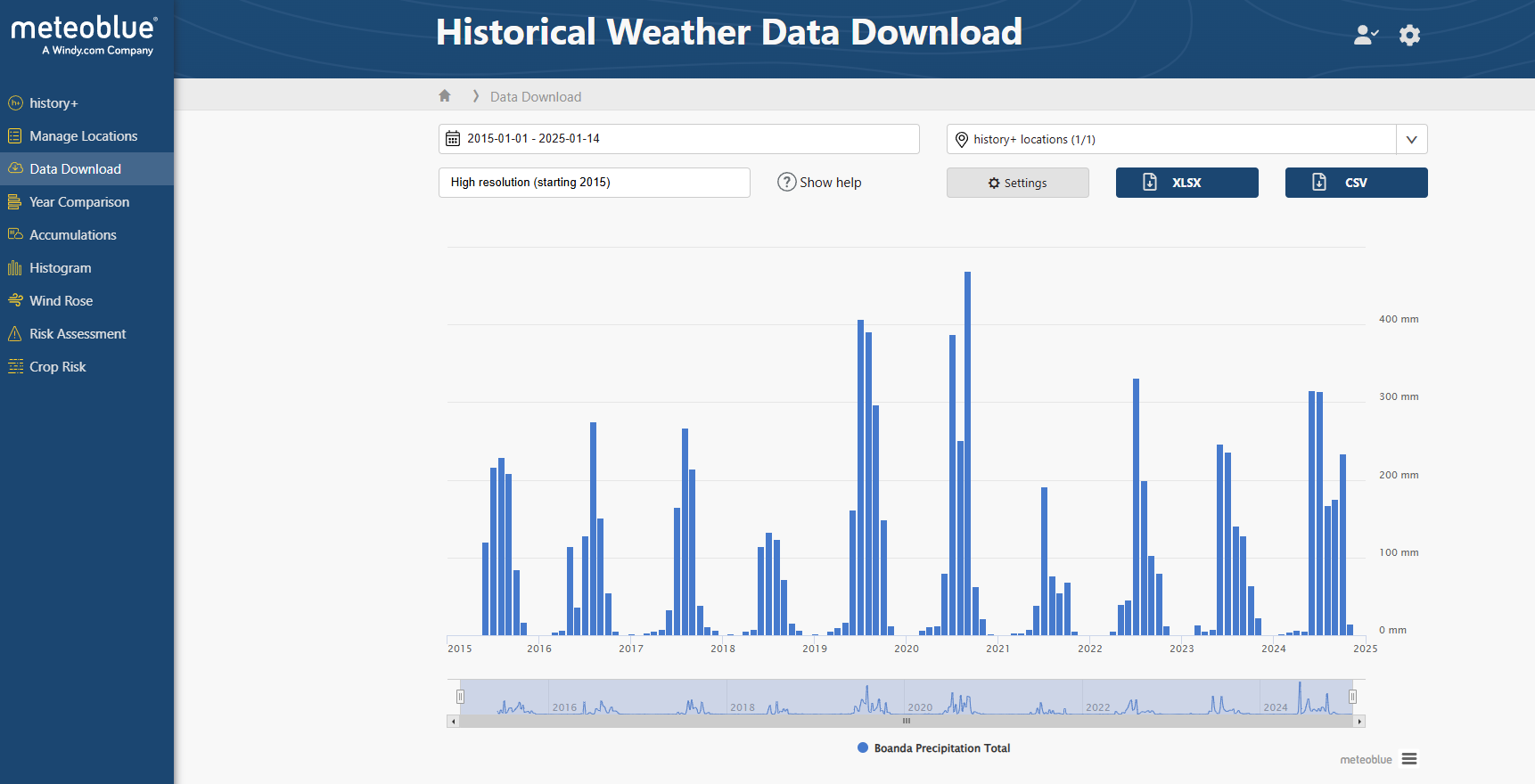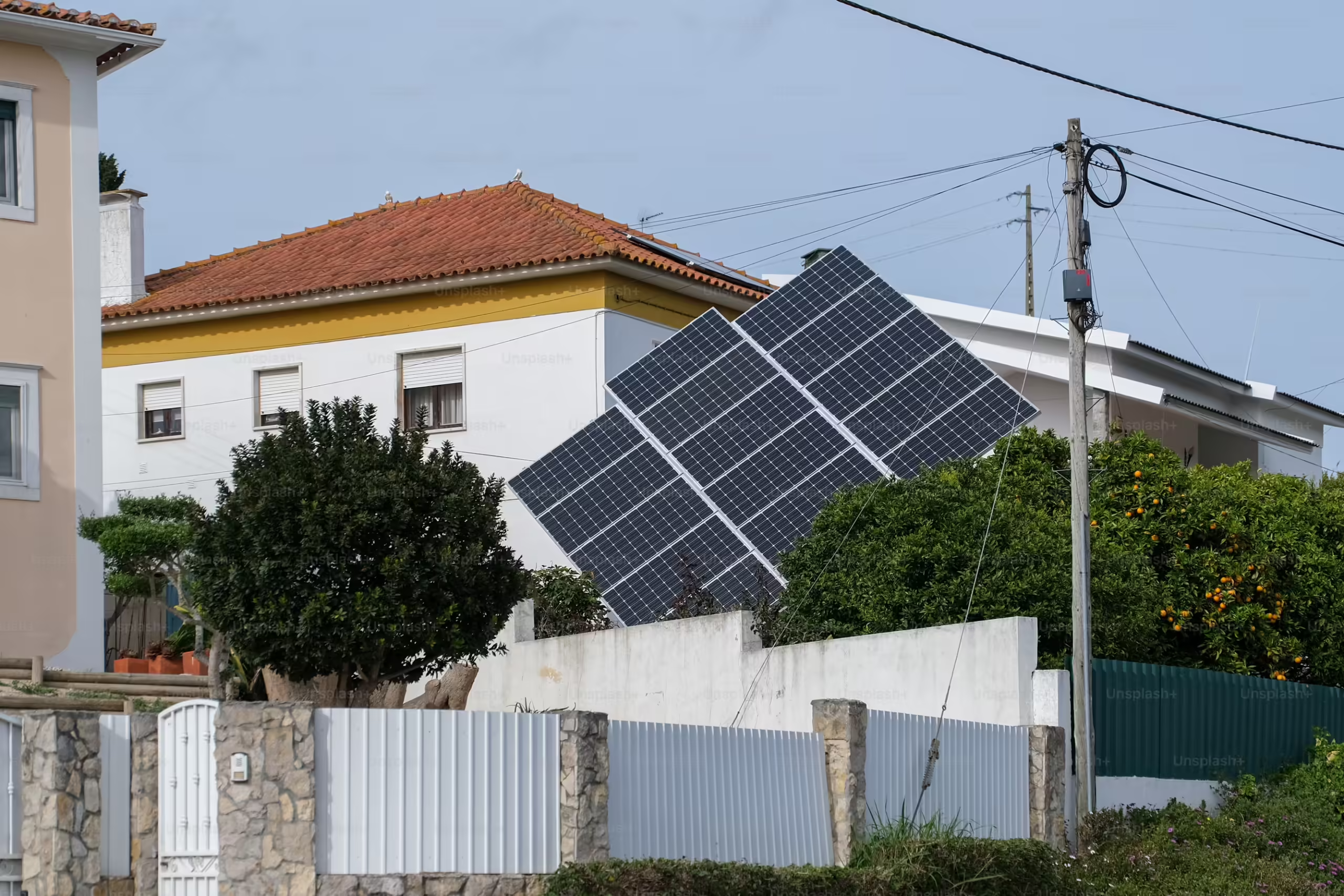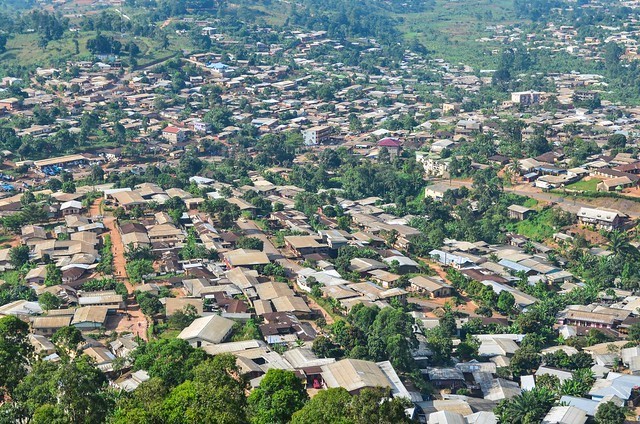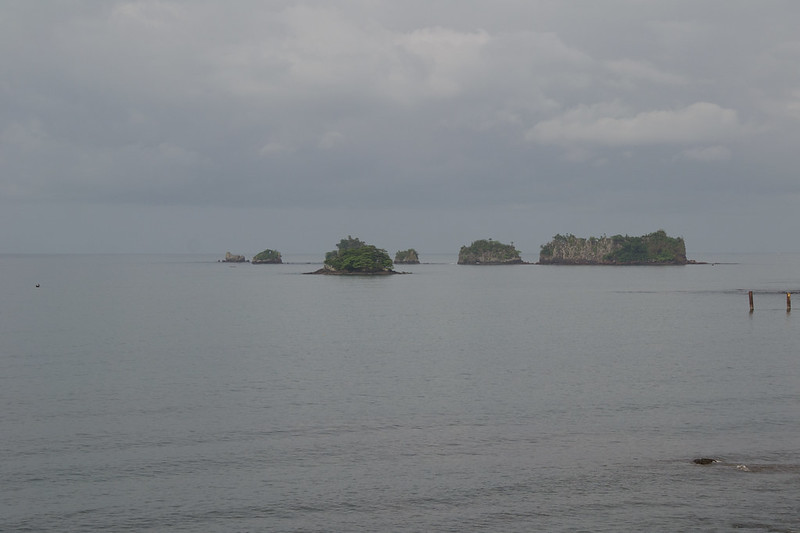At CFB Holding, we are committed to sustainable and responsible construction practices that meet both the environmental and infrastructural needs of the communities we serve. As part of our development of the Elysian Heights Residential Estate, effective stormwater management has been a top priority, particularly given the challenges posed by Cameroon’s unique environmental conditions.
Understanding Stormwater Hydrology in Cameroon
One of the significant hurdles in designing stormwater systems for the Elysian Heights project is the absence of standardized stormwater design regulations in Cameroon. To address this gap, we leveraged historical rainfall data to create a robust and site-specific solution. Data from Meteoblue, spanning from January 2015 to December 2025, revealed the highest recorded rainfall intensity in Boanda to be 29.8mm/hour on August 1, 2019.
Using this data, we developed an Intensity-Duration-Frequency (IDF) curve for the site. This curve serves as a critical tool in estimating the intensity of rainfall events and their potential impact on stormwater runoff, enabling us to design for both short-term and long-term scenarios.
Designing for Peak Stormwater Runoff
Our stormwater management strategy included calculating pre-development and post-development runoff levels for various return periods. The focus was on two key return periods:
- 1:20 Year Return Period: Represents common storm events and helps in designing infrastructure that can handle frequent rainfall.
- 1:50 Year Return Period: Addresses extreme storm events, ensuring resilience and safety even under the most challenging weather conditions.
Stormwater Detention Pond: A Sustainable Solution
To manage and mitigate stormwater runoff, we designed stormwater detention ponds tailored to these return periods:
- 1:50 Year Return Period:
- Pond Dimensions: 50m length, 35m width
- Total Area: 1,750 m²
- Maximum Depth: 1.5m
- Side Slopes: 1:3 gradient for stability and ease of maintenance
- 1:20 Year Return Period:
- Pond Dimensions: 30m length, 30m width
- Total Area: 900 m²
- Maximum Depth: 1.5m
- Side Slopes: 1:3 gradient
These detention ponds are strategically located at the eastern entrance of the residential development, serving as a critical component of our stormwater management system. They will collect, store, and regulate the flow of stormwater, preventing flooding and erosion while recharging groundwater resources.
Integrating Sustainability and Practicality
To further enhance the effectiveness of our stormwater management system, the detention ponds are designed with gentle side slopes, ensuring they blend seamlessly into the landscape. This approach not only enhances safety but also allows for potential landscaping features, transforming functional infrastructure into a visually appealing element of the estate.
Why Stormwater Management Matters
Stormwater management is more than just a technical requirement; it is a vital aspect of sustainable development. Properly managing stormwater:
- Reduces the risk of flooding and property damage.
- Minimizes soil erosion and sedimentation.
- Protects water quality by controlling pollutant runoff.
- Enhances the resilience of infrastructure to climate variability.
A Vision for Resilient Communities
At CFB Holding, we believe that infrastructure development should harmonize with the environment while serving the needs of the community. Our stormwater management plan for Elysian Heights reflects our commitment to creating resilient, safe, and sustainable living spaces.
Through innovative engineering and a focus on sustainability, we are building more than just homes — we are laying the foundation for thriving communities that stand the test of time.
For more updates on our projects and commitment to sustainable construction, follow our blog or reach out to us directly. Together, let’s build a better tomorrow.






